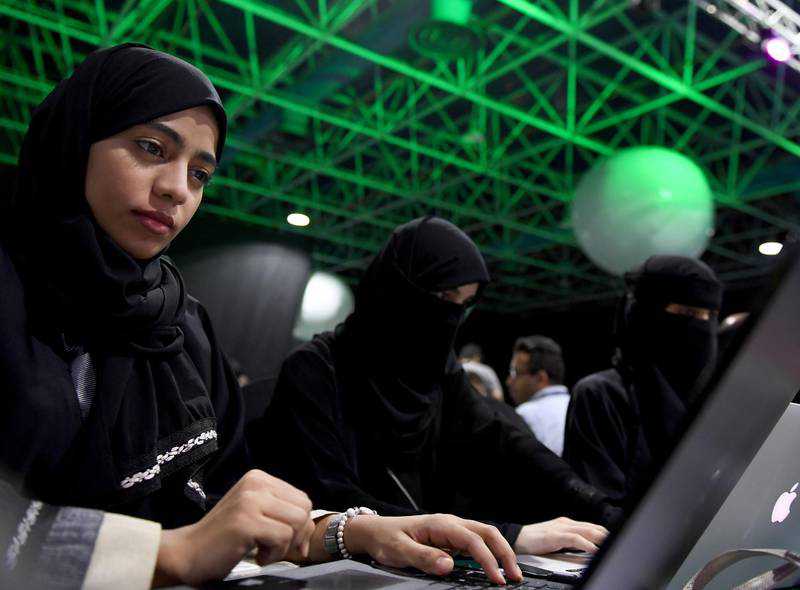Why it is important to challenge gender bias in the tech sector
29 August, 2021

Across all industry sectors, technology is radically disrupting business and the demand for technology talent is growing. At the same time, gender diversity is an increasing area of focus for the technology industry, and rightly so.
If gender diversity is not considered in the hiring and promotion process, it can have a significant and adverse impact on business growth.
Over the years, we have witnessed a positive trend in the role and presence of women in technology. The UAE, for example, climbed 48 places in the World Economic Forum's 2021 Global Gender Gap Index rankings, rising from 120th in 2020 to 72nd globally. The steady increase in women now taking up technology roles on a global scale is a critical sign of progress.
Despite this, there are many challenges that still remain, such as women not being hired in male-dominated workplaces, lack of promotions and unequal salaries. It is also important to recognise that while women in some parts of the world are fighting for equal work opportunities, women in other regions are fighting for basic rights.
I believe that challenging and calling out gender bias and discrimination is something we should all be doing continuously and not just on special days. These are important issues that we should seek answers to as we continue the fight for gender equality to create an inclusive world for all.
Put simply, lack of gender diversity can cause serious problems for businesses, for example:
Less revenue generation
Organisations with a higher proportion of women in their executive teams are more likely to experience above-average profitability. In fact, the inclusion of women in the digital economy and increased diversity brings value, both socially and economically. For this reason, organisations that hire and retain more women automatically gain a competitive advantage and generate more revenue.
Lack of creativity and motivation
Gender diversity empowers organisations to be more agile and innovative. Since different people have different opinions and ideas, everyone can bring unique and brilliant ideas to the table. For this reason, gender-equal workforces are more likely to have varied perspectives and approaches. This can result in creative and informed decisions that boost business performance. Gender-diverse workspaces with successful women in senior positions motivate more young women to take up leadership roles.
Hiring difficulties and impact on reputation
On a global scale, people care about organisations' ethics, social responsibilities and fair employment practices. Any sign of discrimination and gender bias can destroy an organisation’s reputation. This will also result in employees leaving the organisation, costing them a lot of money and making it difficult to hire the best applicants. Organisations with diverse teams build a strong reputation for themselves.
Poor understanding of customers’ needs
In any business, customers are most likely to come from various backgrounds. By ensuring that an organisation’s employee base reflects their customers, the business will be able to communicate effectively with them and gain a better understanding of what customers need. If gender diversity is not a priority, we are at risk of not properly understanding the target market.
The role of technology in tackling gender bias
Overall, the global gender gap might still take many years to close. However, technology can help us accelerate this process. In fact, data science and analytics are already providing us the tools to tackle gender inequality and empower women. Data analytics can enable human resource teams to identify patterns of bias that exist and come up with fair hiring processes and compensation structures.
Artificial intelligence-powered language detectors can filter out gender-biased wording in job descriptions. This can encourage recruiters to reassess their language and ensure they adopt fair measures when hiring employees that focus on skills rather than gender.
When carefully designed, AI solutions can also mitigate issues that are linked to unfair performance reviews, payment gaps and unfair promotion decisions that are based on gender bias. All this can effectively help improve the retention of women employees and promote a more inclusive work environment.
Machine learning tools can compare employees’ key performance indicators and alert managers when someone is consistently assigned fewer or less important tasks because of their gender. This can also ensure that an organisation’s workforce is balanced and that there is an equal proportion of male and female employees.
However, organisations need to take the right steps to ensure that new technologies do not end up widening the gender gap. This means being cautious with how some technology is introduced.
Looking to the future
We cannot stop disruption from changing our industries, but we have the power to tackle gender bias and promote diversity. While the future certainly looks brighter for the next generation of female technology talent, we need to work hard and continue supporting women in the sector.
This can certainly help accelerate the transition towards a more gender-balanced world. The rise in working from home and gig work opportunities can encourage more women to join technology workforce. Such opportunities, along with a flexible work culture, can definitely be a game changer.
Source: www.thenationalnews.com
TAG(s):
